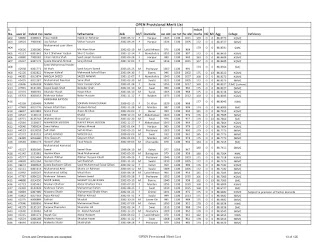Kingdom animalia chart anf group-I of periodic table
Download
Group–I A
1. Li-Na-K-Rb-Cs-Fr
2. Group
first members are called alkali metals since they form oxides and hydroxides
which combine with water to produce alkaline solution.
3. Li-Na
and K are safe to save in school lab and rest are violently reactive.
4. They
are softer than other metals and can cut with knife.
5. These
metals are lighter than other elements and having low melting point, boiling
point and density.
Atomic
and physical properties
6. Down
the group;
·
Atomic radius → Increases
·
Density → Decreases
·
Ionization energy → Decreases
·
Electronegativity → Decreases
·
M.P and B.P → Decreases
7. Potassium
is lighter than sodium.
Trend
in reactivity with water
8. Excluding
Lithium, which reacts slower than al the other elements of group-I.
9. The
reactivity of group-I follow the values of electrode potential.
Reaction
with oxygen
10. Li,
Na and K are stored in oil.
11. Cs
and Rb are normally stored in a sealed glass tube to prevent air contact.
Reaction
with air or oxygen
12. Alkali
metals react with air or oxygen to form various oxides such as
·
Li2 O and Li3 N
·
Na2 O and Na2O2
·
K2 O2 and KO2
·
Rb and Cs form superoxide
13. Oxides;
·
Li
→ normal oxide
·
Na
→ normal and peroxide
·
K
→ peroxide and superoxide
·
Rb
→superoxide
·
Cs
→ superoxide
Reaction
of oxides with water and dilute acids;
14. Normal
oxide; X2O + H2O → 2XOH
15. Peroxide;
X2O2 + 2H2O → 2XOH + H2O2
16. Superoxide;
2XO2 + 2H2O →2XOH + H2O2 + O2
Reaction
with dilute acids
17. Normal
oxide; X2O +2HCl → 2XCl +H2O
18. Peroxide; X2O2 +2HCl →
2XCl +H2O2
19. Superoxide; 2XO2 + 2HCl →2XCl +H2O2
+ O2
Reaction
with chlorine
20. Sodium
burns with intense orange flame in chlorine in exactly the same way as it does
in pure oxygen,
21. 2X
+ C2 → 2 XCl
22. 2Na
+ Cl2 → 2 NaCl
23. Compounds
of Group-I A elements are more stable to heat than the corresponding compounds
of Group-II elements with the exception of lithium compounds.
Effect
of heat on nitrates;
24. Colour
of nitrogen dioxide is brown fumes.
25. Lithium
nitrate produces lithium oxide, nitrogen dioxide and oxygen.
4 LiNO3 → 2 Li2O
+ 4NO2 + O2
26. Nitrates
of the other alkali metals decompose to corresponding nitrites.
2XNO3 → 2 XNO2
+ O2
Effect
of heat on Carbonates;
27. Lithium
carbonate decomposes on heating to give lithium oxide and carbon dioxide.
Li2CO3 → Li2O
+ CO2
28. The
rest of group-I carbonates do not decompose even at higher temperature.
Effect
of heat on Hydrogen Carbonates;
29. Carbonates
of alkali metals are stable enough to be isolated as solids.
30. Hydrogen
carbonates decompose on heating forming carbonates.
31. Thermal
stability of hydrogen carbonates of group I and Group II increases down the
group. The reason is increasing size and decreasing charge density of the metal
ions.
32. The
polarizing power of a cation increases with increasing charge on the ion and
decreasing the radius of the ion.
33. Catoin
of greater polarizing power distorts the HCO3 ion more and
facilitates its decomposition than a cation of larger size and lesser
polarizing power.
34. Bicarbonates
of group-I are more stable than those of group II and stability decreases down
the group.
Flame
Tests;
35. Li → Red
36. Na
→ Yellow
37. K → Lilac
38. Rb → Red
39. Cs → Blue/violet
40. Polarizing
power is directly proportional to decomposition.
41. Polarizing
power is directly proportional to charge and inversely to radius.








